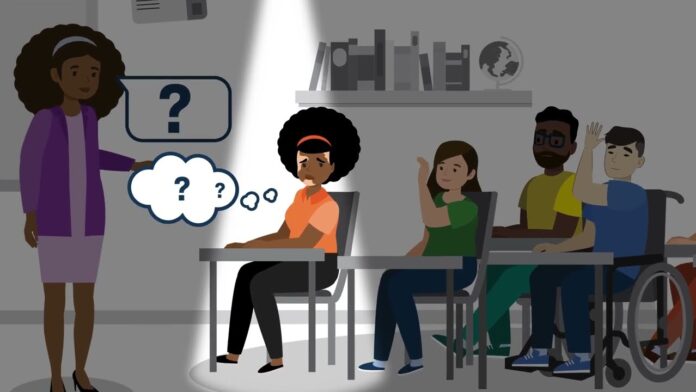In recent years, community colleges have become a hot topic in the world of education. These institutions, also known as junior colleges or technical colleges, have traditionally been viewed as a stepping stone to a four-year university for those who couldn’t afford it or didn’t have strong academic backgrounds. However, community colleges are now gaining recognition for their own unique value and are transforming local education landscapes across the country.
With increased enrollment rates, innovative programs and courses, partnerships with local businesses, and support for non-traditional students, community colleges are making a significant impact on both individuals and communities. Let’s take a closer look at how these institutions are changing the game in the world of education.
Increased Enrollment Rates: Affordability and Accessibility
One of the main reasons for the rise in popularity of community colleges is their affordability. In today’s economy, the cost of higher education has become a major barrier for many individuals. According to a report by the College Board, the average cost of tuition and fees for a public four-year institution was $10,230 for the 2020-2021 academic year. On the other hand, the average cost for a community college was only $3,770.
This significant difference in cost makes community colleges a more accessible option for individuals who may not have the financial means to attend a four-year university. Additionally, many community colleges offer financial aid and scholarships, making it even more affordable for students to pursue their education.
Moreover, community colleges are often located in or near communities, making them easily accessible for individuals who may not be able to relocate or commute long distances for higher education. This accessibility factor is especially beneficial for non-traditional students, such as working adults and parents, who may have other responsibilities and cannot commit to a full-time traditional university schedule.
Flexibility in Scheduling and Course Offerings
Another significant factor contributing to the increased enrollment rates at community colleges is their flexibility in scheduling and course offerings. Many community colleges offer evening, weekend, and online courses, making it easier for students to balance their education with other responsibilities, such as work and family.
Moreover, community colleges often have shorter semesters or trimesters, allowing students to complete their degree or certificate programs in a shorter amount of time. This flexibility in scheduling and course offerings not only makes it more convenient for students, but it also allows them to enter the workforce sooner, saving both time and money.
Demographics of Community College Students
The demographics of community college students have also been shifting in recent years. According to data from the National Center for Education Statistics, the percentage of students attending community colleges who are 25 years old or older has steadily increased since 2010. In 2020, this age group made up 37 percent of all community college students.
This trend reflects the increasing number of non-traditional students enrolling in community colleges. These individuals may be looking to advance their careers, gain new skills, or switch career paths. Community colleges are uniquely equipped to cater to this diverse student population, providing them with affordable and flexible options to pursue their educational goals.
Innovative Programs and Courses: Meeting the Demands of the Modern Workforce

Community colleges are not just about affordability and accessibility; they are also at the forefront of innovation in education. Many institutions are expanding their curriculum to include cutting-edge programs and courses that directly align with the demands of the modern workforce.
With technology rapidly advancing and industries constantly evolving, there is a growing need for skilled workers in various fields. Community colleges are stepping up to fill this demand by offering programs and courses in areas such as healthcare, technology, and trades.
Focus on Technology
As society becomes increasingly reliant on technology, the demand for individuals with technical skills continues to grow. Community colleges have recognized this need and are now offering a wide range of programs and courses in technology-related fields, such as computer science, data analytics, and cybersecurity.
Moreover, community colleges are also partnering with tech companies to provide students with hands-on experience and direct pathways to employment. These partnerships not only benefit students but also create a skilled workforce that can contribute to the growth of local economies.
Expansion of Healthcare Programs
The healthcare industry is another area experiencing rapid growth, creating a high demand for healthcare professionals. Community colleges are rising to the occasion by offering programs and courses in various healthcare fields, including nursing, medical coding, and medical assisting.
These programs not only provide students with the necessary skills and knowledge to enter the workforce, but they also offer opportunities for career advancement and specialization. In addition, community colleges often have partnerships with local hospitals and healthcare facilities, providing students with real-world experience and potential job opportunities upon graduation.
Focus on Trades
While many students may choose to pursue a traditional four-year degree, others may find that a trade or technical career is a better fit for their goals and interests. Community colleges are expanding their trade programs to meet this demand, providing students with affordable and accessible options to gain the necessary skills for various trades such as welding, plumbing, and electrical work.
These programs are also beneficial to local communities as they help fill the gap of skilled workers in these industries. By equipping individuals with the necessary skills, community colleges are contributing to the economic growth of their communities.
Partnerships with Local Businesses: Real-World Experience and Employment Opportunities

Community colleges are not just focused on providing education; they are also invested in creating opportunities for their students to gain real-world experience and employment opportunities. Many institutions have formed partnerships with local businesses, which offer students internships, co-op programs, and other hands-on learning experiences.
These partnerships not only allow students to see firsthand how their education translates into the workforce, but they also provide them with valuable networking opportunities and potential job opportunities upon graduation. Moreover, these partnerships also benefit local businesses by providing them with a skilled and diverse workforce.
Industry-Relevant Curriculum
Partnerships with local businesses also play a role in shaping the curriculum of community colleges. By working closely with industries, these institutions are able to develop programs and courses that directly align with the needs of employers. This ensures that students are equipped with the skills and knowledge that are in demand in the job market.
Furthermore, these partnerships also allow for continuous updates and improvements to the curriculum, keeping it relevant and up-to-date with industry standards. This benefits both students and employers as it provides students with the most current and relevant education, increasing their chances of employability, and it also ensures that employers have access to a skilled workforce.
Job Placement Services
Community colleges also offer job placement services to their students, helping them transition from their education to employment. These services may include resume building, job search assistance, and interview preparation. These resources can be invaluable to students, especially those who may not have prior experience or connections in their desired field.
Moreover, community colleges often have strong relationships with local businesses and industries, which can lead to direct job placements for their students. This further emphasizes the importance of partnerships between community colleges and local businesses.
Support for Non-Traditional Students: Flexibility and Resources
As mentioned earlier, community colleges are increasingly catering to non-traditional students, such as working adults and parents. These individuals may have other responsibilities and commitments that prevent them from pursuing traditional university education. Community colleges recognize this and have implemented various strategies to support these students.
Flexible Schedules and Course Offerings
Flexible schedules and course offerings are one of the main ways community colleges cater to non-traditional students. By offering evening, weekend, and online courses, these institutions make it easier for individuals to balance their education with other responsibilities. This flexibility allows students to continue working, caring for their families, or pursuing other interests while still earning a degree or certificate.
Moreover, community colleges often offer accelerated programs, allowing students to complete their education in a shorter amount of time. This is especially beneficial for non-traditional students who may be looking to enter the workforce or advance their careers as soon as possible.
Support Services
Community colleges also provide various support services to help non-traditional students succeed. These services may include academic advising, tutoring, and counseling. These resources can be particularly beneficial to individuals returning to education after a long break or those who may need additional support to navigate the challenges of balancing school, work, and family.
Moreover, community colleges often have specific support services for non-traditional students, such as childcare facilities or financial assistance for students with dependents. These services not only make it easier for individuals to pursue their education but also create a more inclusive and supportive environment for all students.
Impact on Local Economies: Beyond Education
The impact of community colleges extends beyond education; these institutions also play a significant role in local economies. By providing affordable and accessible education, community colleges are contributing to the growth and development of their communities in various ways.
Job Creation
As mentioned earlier, partnerships between community colleges and local businesses can lead to job creation as these institutions produce skilled workers that are in demand in various industries. Moreover, community colleges also employ a large number of faculty and staff, creating job opportunities within the institution itself.
Community Engagement
Community colleges are often deeply embedded in their local communities, collaborating with various organizations and participating in community events. This not only benefits the community by providing access to education but also fosters a sense of community engagement and contribution among students, faculty, and staff.
Attracting Businesses
Community colleges can also attract businesses to their local communities. As industries are constantly evolving and seeking skilled workers, businesses may be more inclined to set up shop in areas where there is a ready pool of trained individuals. This not only creates job opportunities but also boosts the local economy through increased investment and revenue.
Conclusion
Community colleges are no longer just a stepping stone to a four-year university; they are becoming a destination for affordable, accessible, and innovative education. With increased enrollment rates, partnerships with local businesses, and support for non-traditional students, these institutions are transforming local education landscapes across the country.
The impact of community colleges extends beyond education to their local economies, creating job opportunities, fostering community engagement, and attracting businesses. These institutions are playing a vital role in shaping the future of higher education and providing individuals with opportunities for personal and professional growth and success.









